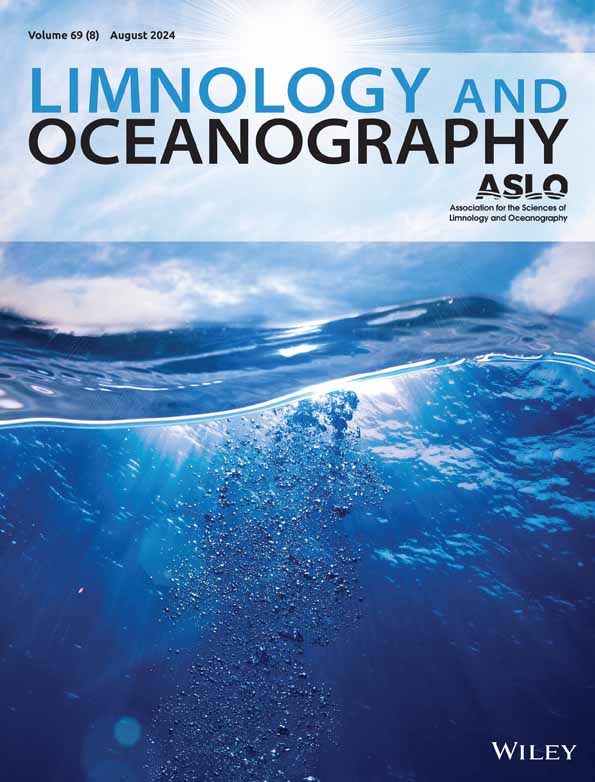Phytoplankton absorb mainly red light in lakes with high chromophoric dissolved organic matter
IF 3.8
1区 地球科学
Q1 LIMNOLOGY
引用次数: 0
Abstract
The impact of chromophoric dissolved organic matter (CDOM) on the spectral underwater light field within photosynthetically active radiation (PAR), and the related responses of spectral phytoplankton light absorption are poorly documented in the mixed layer of lakes. We examined how CDOM influences the spectrum of lake optical properties, underwater light field, photons absorbed by phytoplankton, photoacclimation, and chromatic adaptation of phytoplankton in 127 boreal lakes. In lakes with increasing CDOM content, light intensity decreased steeply with depth, but mixed layer depth and mean light intensity of the mixed layer decreased only moderately. Increasing CDOM content red‐shifted the central wavelengths of lake optical properties, underwater light fields, and the photons absorbed by phytoplankton. In study lakes with increasing CDOM content, the highest light availability shifted stepwise from 580 to 650 nm and close to 700 nm. The ratio of chlorophyll求助全文
约1分钟内获得全文
求助全文
来源期刊

Limnology and Oceanography
地学-海洋学
CiteScore
8.80
自引率
6.70%
发文量
254
审稿时长
3 months
期刊介绍:
Limnology and Oceanography (L&O; print ISSN 0024-3590, online ISSN 1939-5590) publishes original articles, including scholarly reviews, about all aspects of limnology and oceanography. The journal''s unifying theme is the understanding of aquatic systems. Submissions are judged on the originality of their data, interpretations, and ideas, and on the degree to which they can be generalized beyond the particular aquatic system examined. Laboratory and modeling studies must demonstrate relevance to field environments; typically this means that they are bolstered by substantial "real-world" data. Few purely theoretical or purely empirical papers are accepted for review.
 求助内容:
求助内容: 应助结果提醒方式:
应助结果提醒方式:


